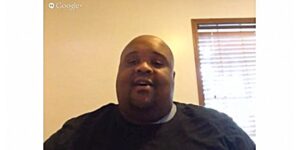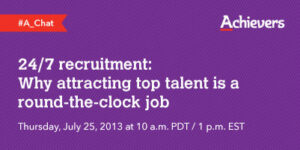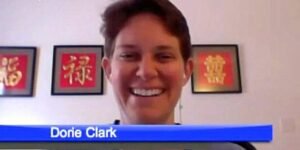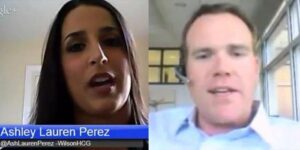
Hiring Culture: Creating A Recruitment Ecosystem
Every company has a distinctive organizational culture and “hiring culture.” To improve the impact of your hiring culture, focus on 3 essential elements…

Every company has a distinctive organizational culture and “hiring culture.” To improve the impact of your hiring culture, focus on 3 essential elements…

Where does recruiting end and marketing begin? In today’s social workplace, it’s hard to tell the difference. What does this mean for HR professionals and processes? Let’s talk

Statistics show that tapping into the flexible workforce is a smart business move. Why? This infographic illustrates 5 compelling reasons…

Does talent acquisition seem like a vicious cycle at your company? For sustainable results, try an approach that integrates 3 elements

What does it take to attract top talent in today’s world of work? Save the date for a special webinar with experts from Achievers and TalentCulture!

Is your professional persona an accurate reflection of you? How can you reinvigorate your personal brand for better results? Let’s talk about it…

Finding the next superstar employee can be a challenge. It can start by hiring solid interns, since they often move to full-time positions. But what traits should you look for?

A potential employee may look great “on paper,” but how can an interview determine if there’s a fit with your culture? Try some creative questions

These days, the talent hunt process isn’t easy for either side of the hiring equation. What can employers do to recruit more effectively — and also win points for their brand?

It’s increasingly important to think of the hiring process as a reflection of an employer’s brand. Why and how can companies improve this “candidate experience”?

The skills gap is real. We can’t afford to wait for education or government or business to fix the problem. But there are ways to make a difference, wherever we are…

HR technology is advancing at breakneck pace! Is that all good — or are we at risk of losing something vital in acquiring and developing talent? See wisdom from the TalentCulture crowd…

It’s a big week ahead in the world of work! On the road LIVE from the HRO Today Forum, we’re showcasing HR business and technology innovators. Take a sneak peek at this week’s events and star performers…

HR technology innovation is on a roll, and advancements in HR self-service are staggering. But let’s not lose sight of what matters most…

As business looks for new sources of competitive advantage, how can innovative workforce strategies lead the way? HRO Today Forum creator, Elliot Clark, examines the latest research findings with the TalentCulture community…
Remember, this week at TalentCulture, we’re everywhere you want to be! In addition to our regular #TChat events, we’ll be onsite at the Recruiting Trends Social Summit in DC…

Even today, negative stereotypes can cast a shadow over our professional lives. See what experts from a top recruiting outsourcing firm say about labels in the workforce – this week’s focus on #TChat…
Increasingly, career paths involve many steps and diverse experiences. How can individuals and employers leverage this for the better?
Save the date – April 11, 2013 — TalentCulture Community co-founders, Meghan and Kevin will be live at the Recruiting Trends Sourcing and Recruiting Social Summit, sharing insights from the forum on Twitter…
Social media has made our lives open books. But what are the implications for how we manage our individual “brands”? The TalentCulture community shared opinions and ideas…
This week #TChat has star power! We get real about employee and employer brands with the creator of reality TV show “Top Recruiter”…
The ranks of the long-term unemployed are swelling. Meanwhile, employers struggle to fill available positions. What’s wrong with this picture?
In the middle of winter there’s a warm huddle coming to New England. It’s the Boston leg in a series of red-hot “un-conferences” for HR professionals – called SocialHR Camp. A dynamic, flexible, collaborative knowledge-sharing environment – designed for HR pros who want to leverage social media in their workplace environments and in their careers. Sounds very cool.
As a flood of recent veterans return from tours of duty in Iraq and Afghanistan, they bring specialized skills, professionalism and commitment to the workforce. So why are employers slow to hire those who’ve served in the military? What should recruiters and business leaders do to dispel myths and leverage this strong talent pool?
Once I dipped my toe into the Twitter pool, I knew there was no turning back. And now here I am one year later, writing the recap for the very chat that indoctrinated me into the social world of work…